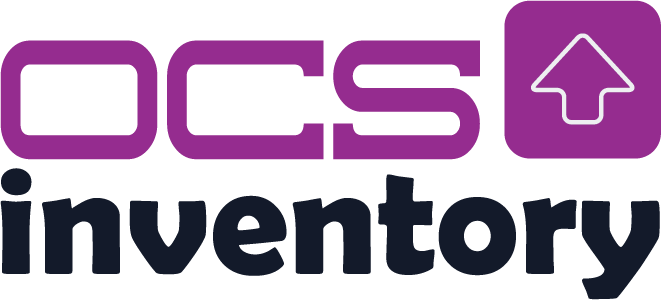Make is install so only do a :
make install
On environment/env.mk set your TZ and TIMEZONE value.
make start
make help
TIPS:
- Only do a
maketo see allowed task and you see :
.env Configure environment variable available for docker-compose
hard-restart Restart project AND REMOVE ALL VOLUME (except glpi app installation)
hard-stop Stop project AND REMOVE ALL VOLUME (except glpi app installation)
install Install project
reinstall Stop and remove all and reinstall all
restart Restart project
start Start project
stop Stop project
Whole reinstall ( /!\ ALL WILL BE REMOVES /!\ ) and you have to do reset your env value (Second step):
make reinstall
It will start up all the environment:
- OCS stack on port
8080 - GLPI project + DB & config on port
80
Go to http://localhost with the default credentials:
login - glpi
pass - glpi
Go to http://localhost:8080 with the default credentials:
login - admin
pass - admin
On OCS inventory URL are /ocsreports, /download and /snmp, and for all client agent, configuration have to send infor;ation to URI /ocsinventory for send informations.
400 error (Bad Request) on the uri
/ocsinventoryand 400 forbidden on/downloadon browser is normal : this url is for agent install on all your devices which are clients and send information about their devices.
Some Links:
Ask question |
Website |
OCS Professional
OCS (Open Computers and Software Inventory Next Generation) is an assets management and deployment solution. Since 2001, OCS Inventory NG has been looking for making software and hardware more powerful. OCS Inventory NG asks its agents to know the software and hardware composition of every computer or server.
Since 2001, OCS Inventory NG has been looking for making software and hardware more powerful. OCS Inventory NG asks its agents to know the software and hardware composition of every computer or server. OCS Inventory also ask to discover network’s elements which can’t receive an agent. Since the version 2.0, OCS Inventory NG take in charge the SNMP scans functionality. This functionality’s main goal is to complete the data retrieved from the IP Discover scan. These SNMP scans will allow you to add a lot more informations from your network devices : printers, scanner, routers, computer without agents, …
OCS Inventory NG includes the packet deployment functionality to be sure that all of the softwares environments which are on the network are the same. From the central management server, you can send the packets which will be downloaded with HTTP/HTTPS and launched by the agent on client’s computer. The OCS deployment is configured to make the packets less impactable on the network. OCS is used as a deployment tool on IT stock of more 100 000 devices.
###Docker Stack OCSInventory
This repository contains the needed files to build and run the OCS stack in his last version. This stack is based on the official Debian image and official MYSQL image, you can find them on the Docker hub. We include a MYSQL container with pre-configured with the required database settings.
By default, when the OCSInventory container is running it will load a default OCSInventory installation that is ready to be used. However, you can run the installer by defining one of these env variables, you can find them in the docker-compose.YML
####MYSQL container :
environment:
MYSQL_ROOT_PASSWORD : changeme
MYSQL_USER : ocs
MYSQL_PASSWORD : ocs
MYSQL_DATABASE : ocs
####OCSInventory-server container :
environment :
OCS_DBNAME : ocs
OCS_DBSERVER_READ : db-ocs
OCS_DBSERVER_WRITE : db-ocs
OCS_DBUSER : ocs
OCS_DBPASS : ocs
These values are the default values for OCSInventory. After adjusting the docker-compose.yml, you can test the containers with docker-compose
cd OCSInventory-Docker-Stack
sudo docker-compose build
sudo docker-compose up
This will bring up all needed containers, link them and mount data volumes according to the docker-compose.yml configuration file.
###Container shell access and viewing container logs
The docker exec command allows you to run commands inside a Docker container. The following command line will give you a bash shell inside your OCSInventory container:
sudo docker exec -it ocsinventory-server bash
or
sudo docker exec -it ocsinventory-db bash
You can access the logs from the container OCSInventory through Docker container log:
sudo docker logs ocsinventory-server
or
sudo docker logs ocsinventory-db
###Data Volume
Two volumes are created at the start of the stack OCSInventory. They contain the necessary information to ensure a proper functioning of OCS Inventory as well as MYSQL
By default:
ocsdata for the MYSQL service
- /var/lib/mysql/
glpidata for the MYSQL service
- /var/lib/mysql/
ocssrv for service OCSInventory
- /usr/share/ocsinventory-reports/
- /etc/ocsinventory-reports/
- /var/lib/ocsinventory-reports/
Attention do not remove these volumes without having planned backup, otherwise you will lose your data.
GLPI stands for Gestionnaire Libre de Parc Informatique is a Free Asset and IT Management Software package, that provides ITIL Service Desk features, licenses tracking and software auditing. http://glpi-project.org/
GitHub - https://github.com/glpi-project/glpi
- Fork it!
- Create your feature branch: git checkout -b my-new-feature
- Add your changes: git add folder/file1.php
- Commit your changes: git commit -m 'Add some feature'
- Push to the branch: git push origin my-new-feature
- Submit a pull request !
OCS Inventory Docker Stack is GPLv3 licensed
